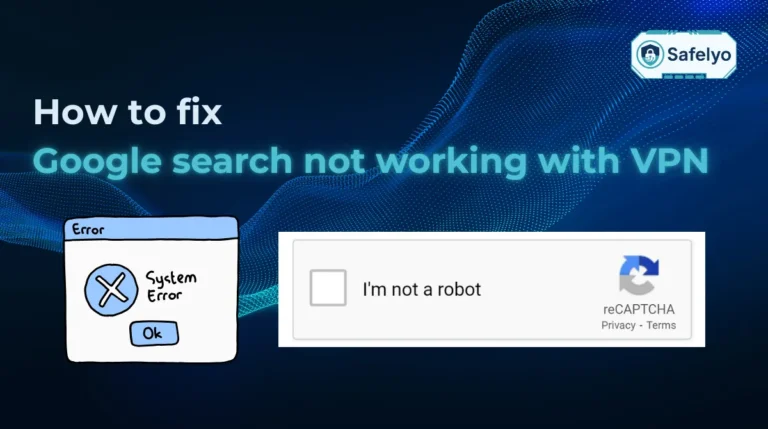If your iPhone seems to run out of power faster than it used to, the issue might be your battery’s condition. Over time, battery performance declines, which can affect how long your device lasts between charges. Knowing how to check battery health on iPhone can help you spot problems early and take steps to keep your phone running smoothly.
In this guide, you’ll discover:
- How to check battery health on iPhone using built-in configurations
- What key battery stats mean
- How to use trusted apps for deeper battery diagnostics
- Clear signs your battery may need replacing and how to protect it
By understanding the way to check battery health on iPhone, you can prevent unexpected slowdowns and stay ahead of potential issues. Keep reading to explore practical steps and smart tips that help your iPhone stay powerful and efficient for the long haul.
1. What is iPhone battery health?
Battery health refers to your battery’s ability to hold a charge compared to when it was new. Apple introduced the Battery Health feature to help users better understand the long-term condition of their iPhone battery. It gives you insight into how your device is performing and whether your battery may be limiting performance.
Learning how to check battery health on iPhone gives you a clearer picture of your device’s reliability and when it might be time to replace the battery.
2. How to check battery health on iPhone (built-in method)
If your phone doesn’t last as long on a single charge, it might be more than just heavy usage – it could be a sign of aging battery cells. The good news is, Apple has made it simple to stay informed. Learning how to check battery health on your iPhone is essential. It helps you understand if your battery is still in good shape. If it’s starting to decline, you can plan ahead. This way, you can prevent any impact on performance.
To check battery health on iPhone, follow these steps:
Open the Settings app on your iPhone. Scroll down and tap Battery.
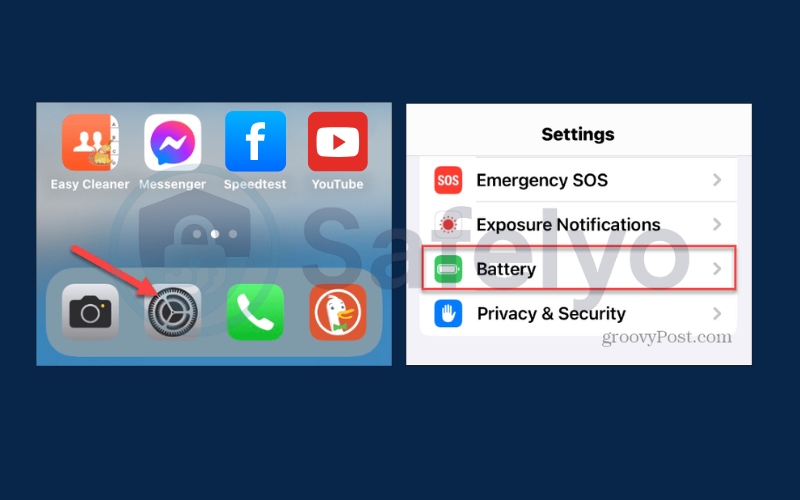
Tap Battery Health & Charging.
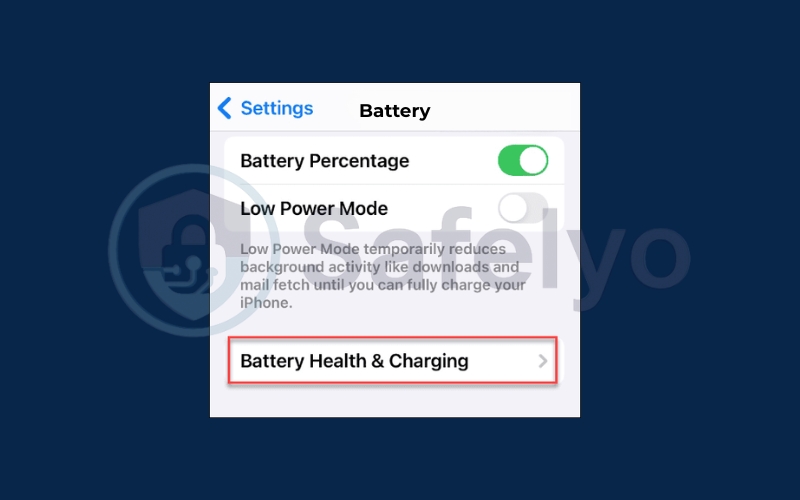
Look at the section labeled Maximum Capacity. This shows the percentage of battery capacity your phone has retained compared to when it was new.
A maximum capability above 90% indicates excellent battery condition. Between 80% and 89% is still serviceable, though signs of aging may appear. If the capacity falls below 80%, your phone might experience reduced performance, and a battery replacement is usually recommended.
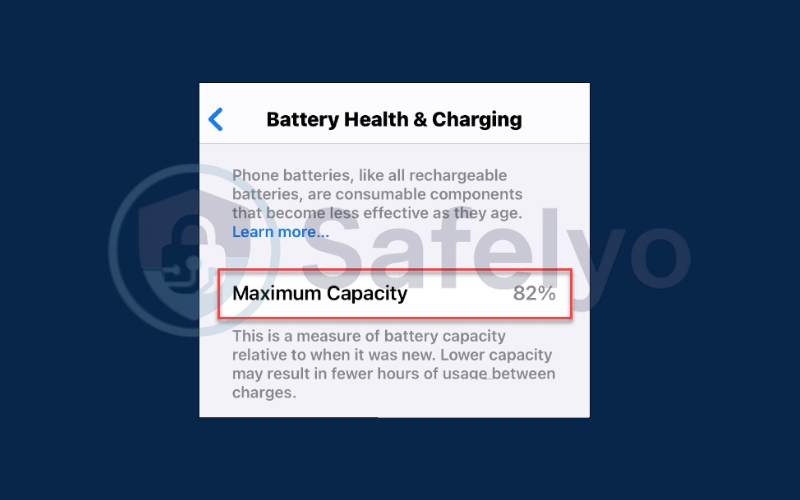
Check Battery Life Stats: Apple provides built-in tools similar to a battery report on Windows. In the Battery section of your configurations, you’ll find visual graphs that show recent powering-up activity and usage. The Last Charged indicator displays when your iPhone was last plugged in and how much charge it had when unplugged.
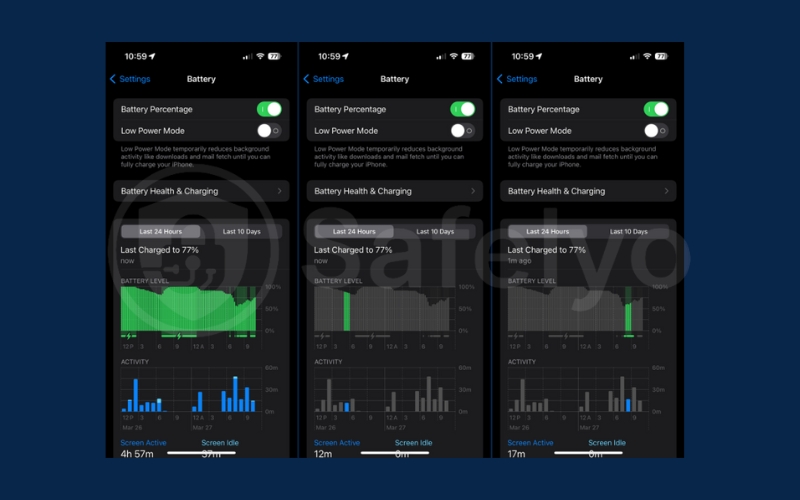
>> Discover:
3. Signs your iPhone battery may need replacing
Even without checking battery stats, your iPhone may show physical signs of battery aging. These can affect daily usability and even the safety of your device.
Look out for these warning signs:
- The battery drains noticeably faster than before
- Your phone randomly shuts down even with charge remaining
- Apps and tasks feel slower or laggy
- The Battery Health section reports capacity below 80%
- You see a message saying “Battery health significantly degraded”
4. Tips to extend and protect battery health
Good battery habits can help delay the natural aging process and reduce wear over time. Small daily choices make a big difference.
To keep your iPhone battery healthier for longer:
- Avoid exposing your phone to hot or freezing environments
- Enable Optimized Battery Charging in the Battery Health & Charging configurations
- Try to keep your battery between 20% and 80% most of the time
- Remove thick or insulated cases if your phone gets warm while powering up
>> Read more:
5. FAQs about checking battery health on iPhone
Before we wrap up, here are answers to some common questions about checking battery health on iPhone. Whether you’re unsure about what the numbers mean or curious about other methods, these quick tips will help.
Can I check battery health on an iPad?
No, iPads don’t include a built-in Battery Health tool. You’ll need to use a Mac app like CoconutBattery for that.
What’s considered good battery health?
A battery with 80% or higher maximum capability is considered in good working condition.
When should I replace my iPhone battery?
If your battery health is under 80% or your phone shows signs of slow performance and shutdowns, it’s time for a replacement.
Are third-party battery apps safe to use?
Yes, as long as you stick with trusted apps from the App Store or well-known developers.
6. Conclusion
Knowing how to check battery health on iPhone helps you stay ahead of potential performance issues and unexpected shutdowns. In just a few taps, you can view important stats about your battery’s condition and determine if it’s still performing well or needs attention. Staying informed can extend your iPhone’s lifespan and improve your everyday experience.
Here’s a quick recap of what you need to remember:
- How to check battery health on iPhone is simple, using the built-in Battery Health & Charging tool
- Third-party apps offer deeper insights, like charge cycles and battery temperature
- Common warning signs can alert you before your battery seriously affects performance
- Following good powering-up habits can help extend your battery’s overall lifespan
Understanding how to check battery health on iPhone puts you in control of your device’s performance and lifespan. Want more helpful Apple guides? Visit the Tech How-To Simplified category on Safelyo for more step-by-step tutorials written for everyday users.

